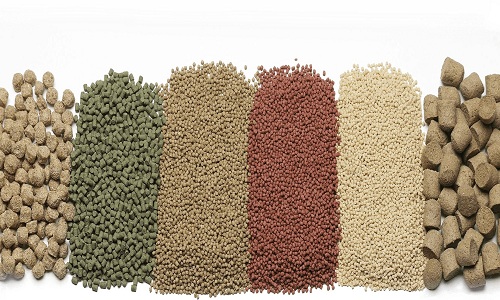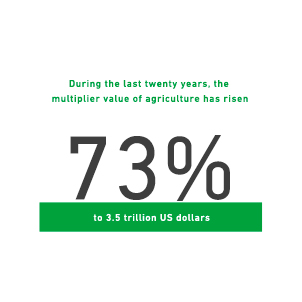“mashroo3k Management offers a feasibility study for a fish feed production plant in Egypt, ensuring the highest profit return and the best payback period, through detailed studies of the Egyptian market size, analysis of strategies of local and foreign competitors, and providing competitive pricing offers.”

The fish feed production plant provides products from unconventional feed sources, such as legumes, grains, plant seeds, biscuit factory waste, tomato paste, dates, and more. The plant offers both floating and non-floating fish feed at competitive prices. The fish are fed with specially formulated feed that contains the appropriate nutrients for their health. The fish feed must have a good nutritional balance and be beneficial to the health of humans who consume the fish. The quality of the prepared feed depends primarily on the quality of the materials, such as grains or herbs used. Raw materials must be of very high quality, and commercial feed manufacturing is a business process that requires the adherence to risk analysis procedures.
<Project “Mashroo3k” Consultancy provides investors interested in investing in a fish feed production plant project in Egypt with a range of specialized feasibility studies, based on updated databases specific to the Egyptian market, which helps ensure the success of the project, achieving the highest profit return and the best payback period.



“Products of the highest quality.
Implementation of approved quality standards.
Adherence to approved health regulations.
Management of development and marketing ideas to enhance competitive advantages.”
Executive summary
Study project services/products
Market Size Analysis.
Risk Assessment.

Agricultural production sector in the GCC countries
There is no doubt that the agricultural sector is of great importance today in the world’s economies; as it helps achieve self-sufficiency and food security, reduces the spread of unemployment and alleviates the burden of poverty, and is the main source of raw materials for many manufacturing industries. This vital sector employs about 935.6 million workers, representing 28.3% of the global workforce.
Global agricultural production sector
Over the past 20 years, the added value of agriculture has increased by 73% to reach US$3.5 trillion.
Agriculture accounts for 4% of global GDP.
Agriculture employs 874 million people, representing about 27% of the world’s total workforce.
4.8 billion hectares is the total agricultural area in the world, divided into (3.2 billion hectares of meadows and pastures and 1.6 billion hectares of crops).
The total global production of primary crops is 9.4 billion tons.
The total global production of red and white meats is 337 million tons.
The total global production of fruits is 883 million tons.
The total global production of vegetables is 1,128 million tons.
The total global production of vegetable oils is 201 million tons.
The total global production of dairy is 883 million tons.
The total global production of eggs is 83 million tons.

According to the Food and Agriculture Organization of the United Nations (FAO), hunger is on the rise, with the number of undernourished people worldwide rising to 770 million; a large number that we hope agriculture and its products will help reduce. It is noteworthy that agricultural land around the world decreased by 127 million hectares between 2000 and 2019 (roughly the size of Niger), while forest area decreased by 94 million hectares (the size of the United Republic of Tanzania) during the same period. These numbers are undoubtedly somewhat unsettling, especially since the world’s population is increasing; therefore, Mashroo3k supports investment under the umbrella of the agricultural sector in order to keep pace with the demand for food.